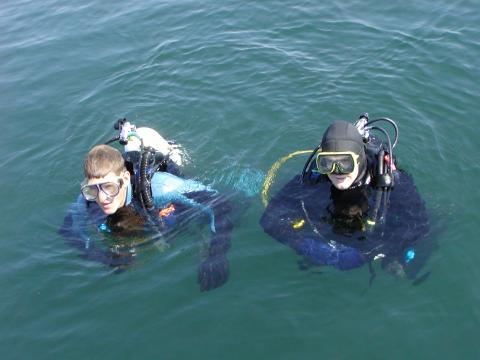
The heart of UNH diving is its scientific diving program, which exists to serve scientists, professors and students in their scientific endeavors. UNH supports diving projects year round with faculty and student researchers conducting projects all over the world. Support for these projects consists of training divers to become capable of working underwater.
Individuals may become UNH scientific divers by taking a UNH sanctioned training course (KIN 735, or 730), or by coming from another AAUS institution as an approved scientific diver.
Elizabeth Kintzing, Diving Program Officer, School of Marine Science and Ocean Engineering
Email: elizabeth.kintzing@unh.edu
Phone: (603) 834-1398
Diving Program History
The program started in the late 1960s when Dr. Larry Harris arrived from the West Coast to spread his joy of the underwater world by taking his students on dives with him. In 1969 Ocean Engineering researcher Dr. Godfrey Savage became involved with Underwater "Habitat" programs. As part of a UNH ocean projects course students and professors built a "Habitat-Edalhab" to be used by scientists for underwater research.
The 70s saw a great deal of development in ocean exploration, and UNH kept pace by expanding its program to become a part of this exploration. In 1970 Al Waterfield became a NAUI Instructor and started teaching courses on campus. The first "Dive Safety Manual" was written in 1974 by Paul Lavoie, the first UNH Diving Safety Officer.
By the mid 1980s Paul oversaw the construction and use of a hyperbaric chamber, used as a DAN (Diving Alert Network) treatment facility as well as to enhance educational and research experiences. This chamber became a valuable tool for many years until its retirement to the Yucatan Peninsula.
In the 1990s UNH joined forces with other educational institutions involved in scientific diving and became an organizational member of the American Academy of Underwater Sciences (AAUS).